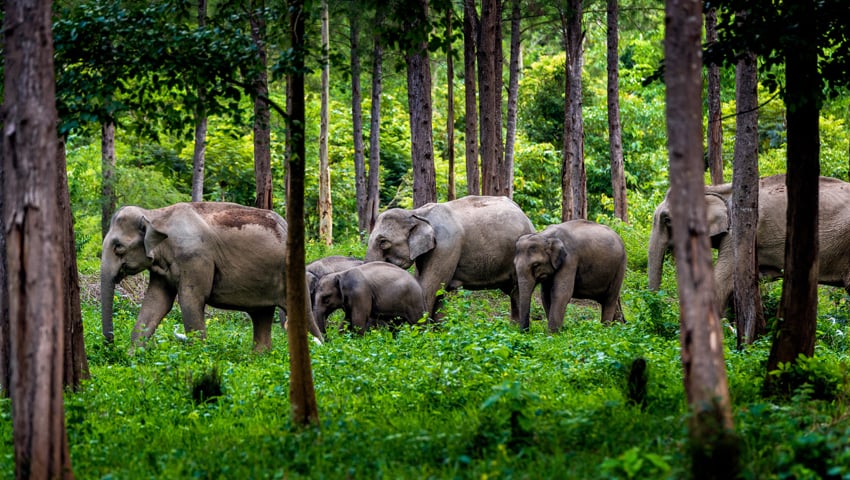New research shows that building animal-driven carbon capture into sequestration models can lead to more accurate ecosystem carbon budgets, enhancing nature-based climate change solutions.
Currently, the mathematical tools that scientists use to account for the amount of carbon captured and stored in ecosystems rarely considers the effects of animals. This stems from the assumption that because animals are much rarer than plants and microbes in ecosystems their potential influence ought to be minimal.
Yet, field studies have begun to show that this assumption may not be accurate.
The research reports on modelling analyses that incorporate insights from field research about the different ways that animals can affect carbon uptake and storage in ecosystems through their interactions with plants and microbes.
The work shows that animal presence fundamentally changes the relationships between plants, microbes, and the environment.
In turn, this leads to large changes in the amount of carbon captured and stored in ecosystems relative to conditions that exclude animals – meaning that animals can be allies in fighting climate change as a key addition to the growing portfolio of nature-based climate change solutions.
Yale University’s Matteo Rizzuto was the lead author on the paper. He said, “In many ecosystems, studies have shown that animals are key players in the carbon cycle. But, animals are so much ‘rarer’ than, say, plants or microbes.
“Our results show that, when it comes to animals, it is really all about ‘what they do’ rather than ‘how many there are’. Animals move, eat, poop, die. And, they ‘change’ how carbon moves in ecosystems.
“Our model shows that animals eating, pooping, and peeing are really carbon capture multi-purpose vehicles. These three animal activities have the ‘largest’ effect on ecosystems’ carbon sequestration because they ‘speed up’ the whole carbon cycle.
“By supercharging the recycling processes in an ecosystem, animals’ presence can increase its carbon capture by 2-3 times.”
Reporting on the research for the American Geophysical Union, Nathaniel Scharping said, “Animals affect carbon cycling directly by eating plants or by eating other animals that eat plants. By producing waste, respiring, and even trampling leaves on the forest floor, they also indirectly speed up the rate at which nutrients—including carbon—are recycled.
“By pairing an ecosystem compartment model (which considers plant, animal, and soil microbial trophic compartments) with a traditional carbon modeling approach, the authors found noteworthy increases in both primary productivity (i.e., plant growth) and carbon sequestration, as well as changes to carbon cycle dynamics, when animals are included in carbon models.
“Importantly, these effects can be complex and are mediated by feedback loops that are still not completely understood. For example, a scenario that includes herbivores but not predators showed the highest levels of carbon sequestration. Adding in predators decreased overall carbon sequestration, though it remained higher than a scenario with no animals.”
Read the research: Rewiring the carbon cycle: a theoretical framework for animal-driven ecosystem carbon sequestration
